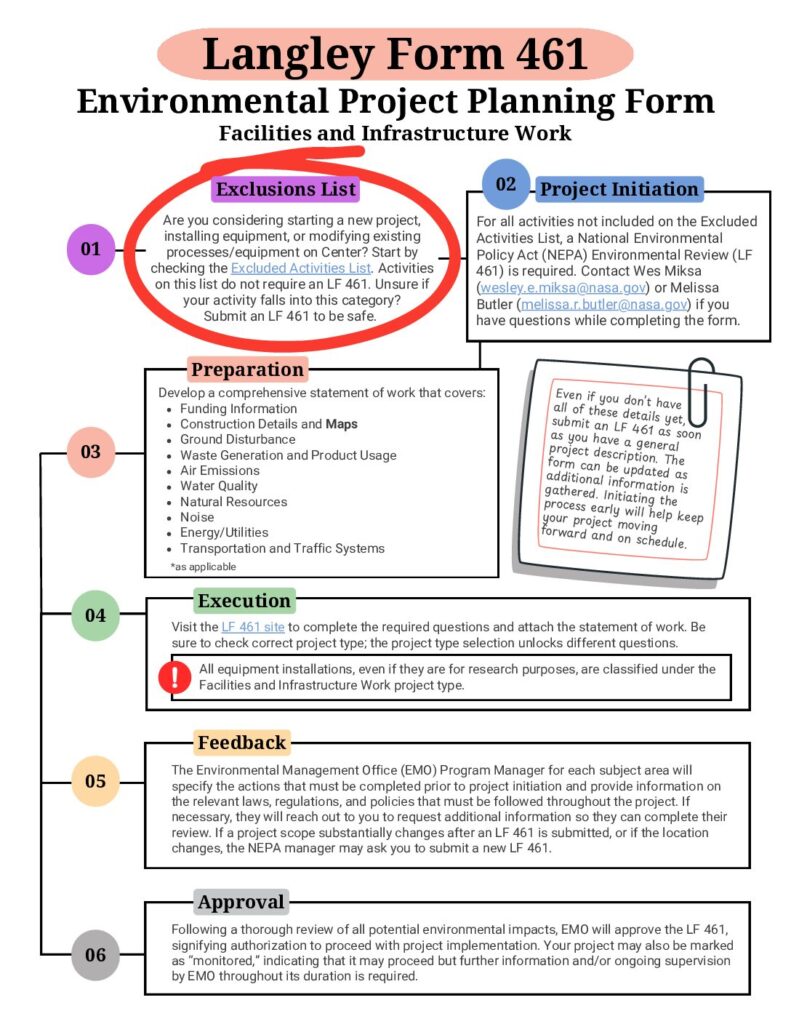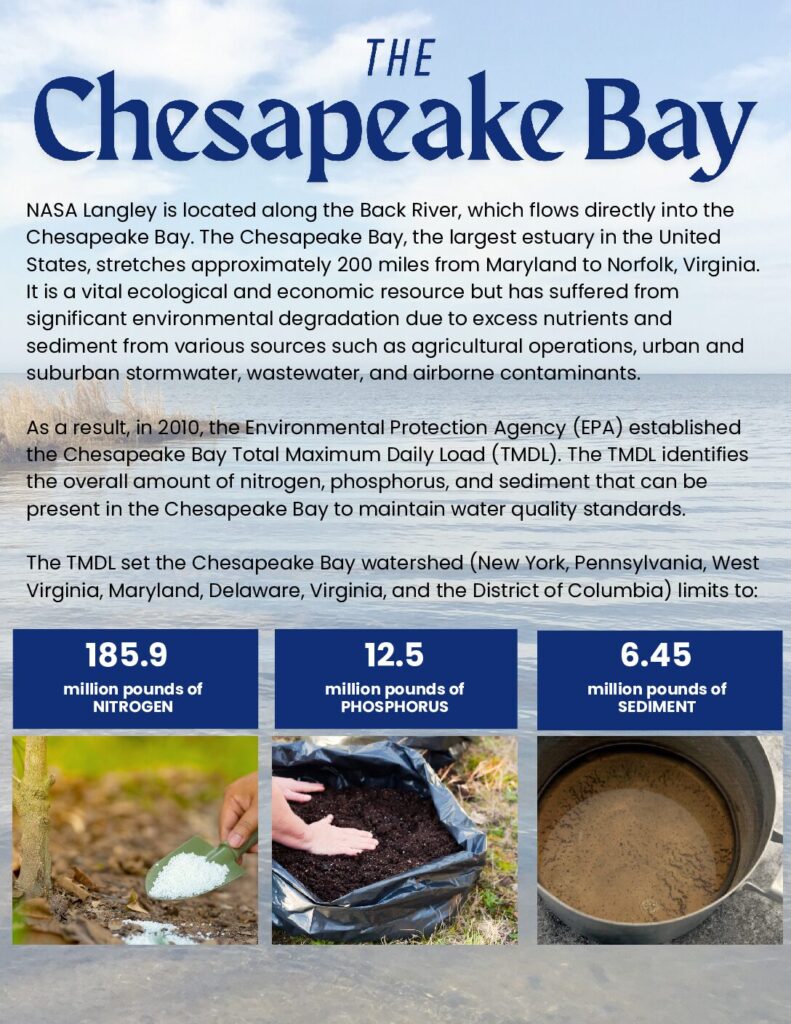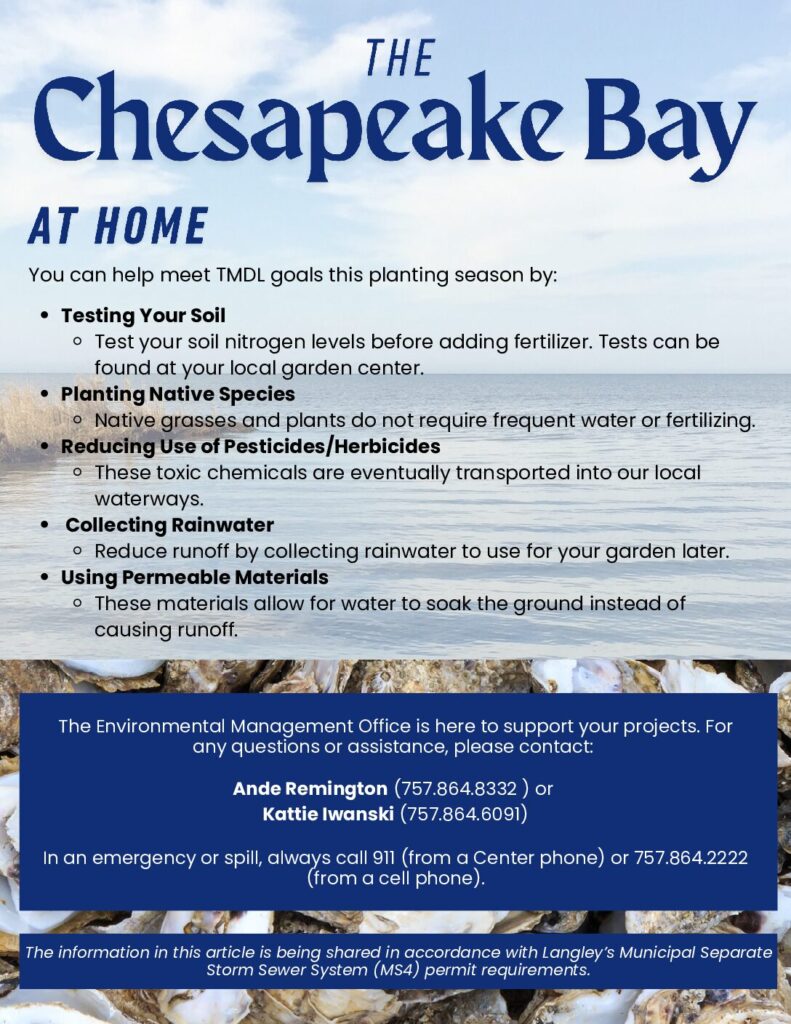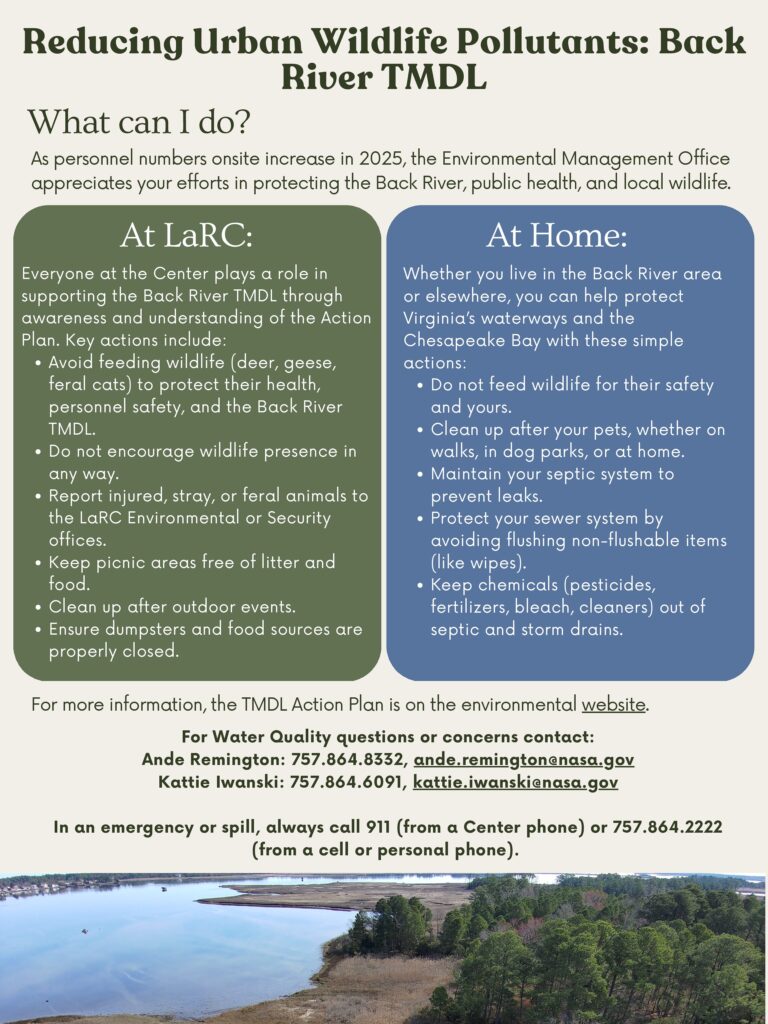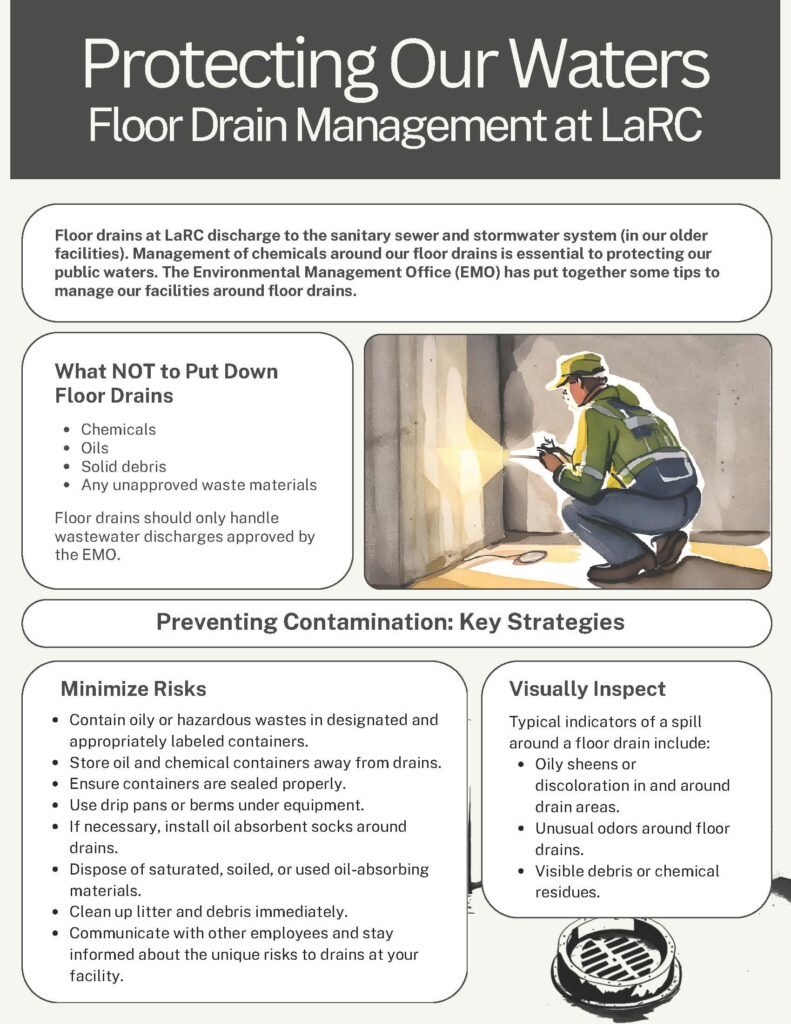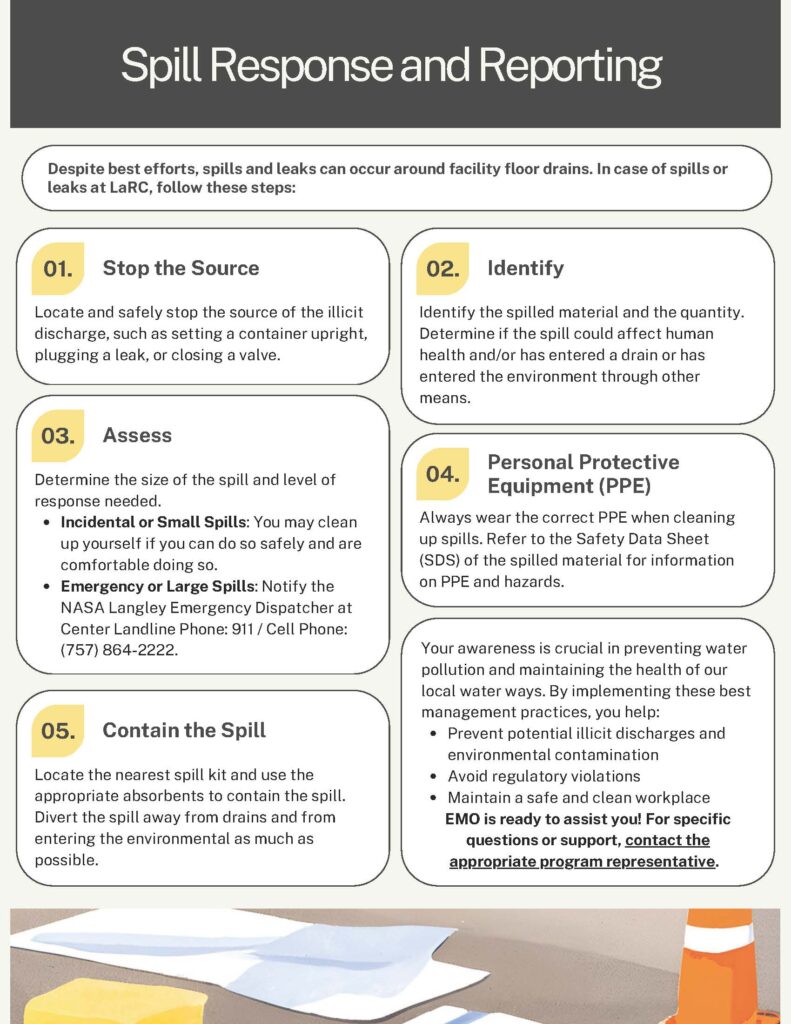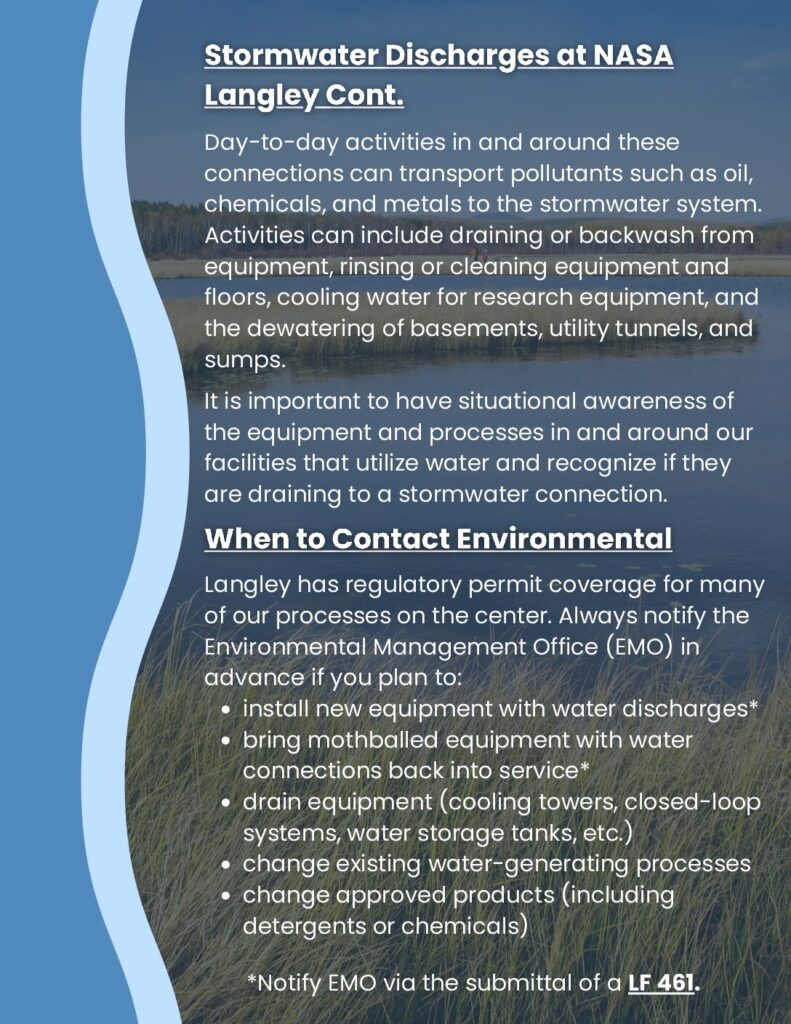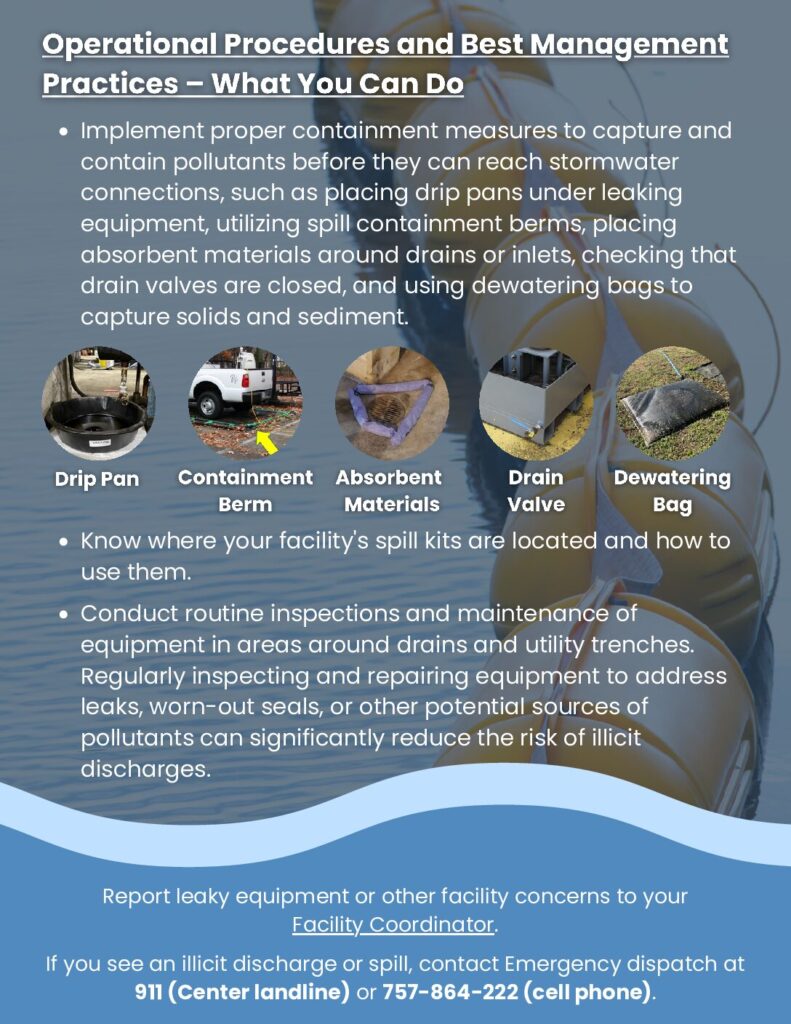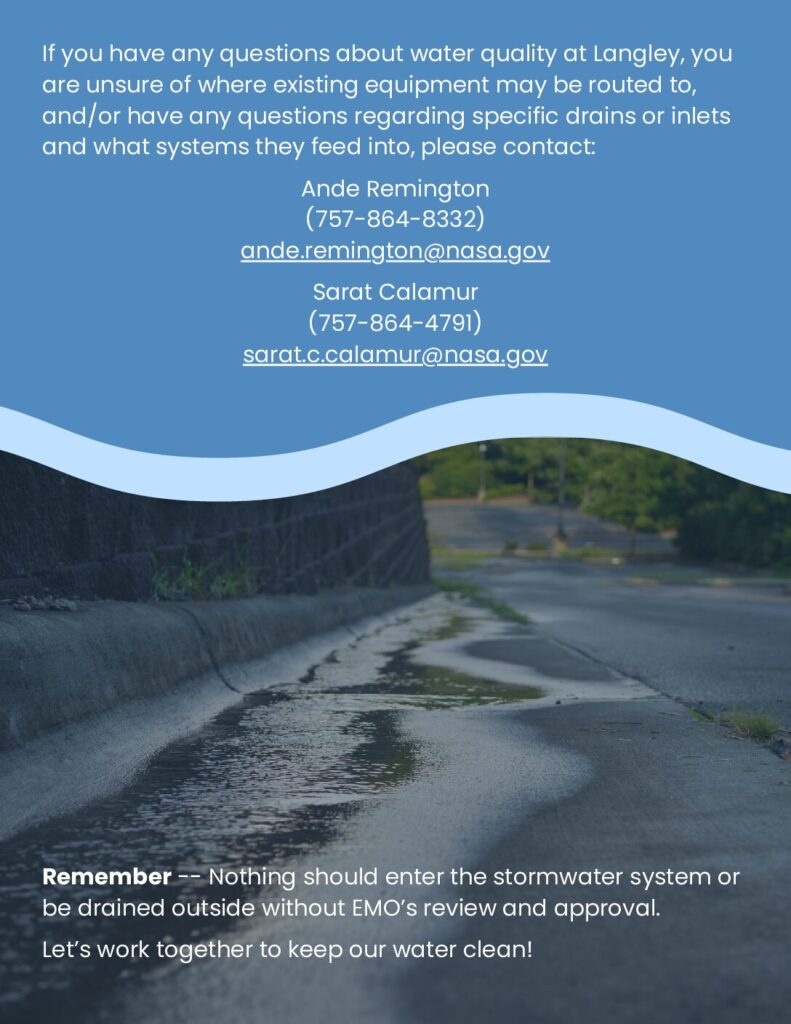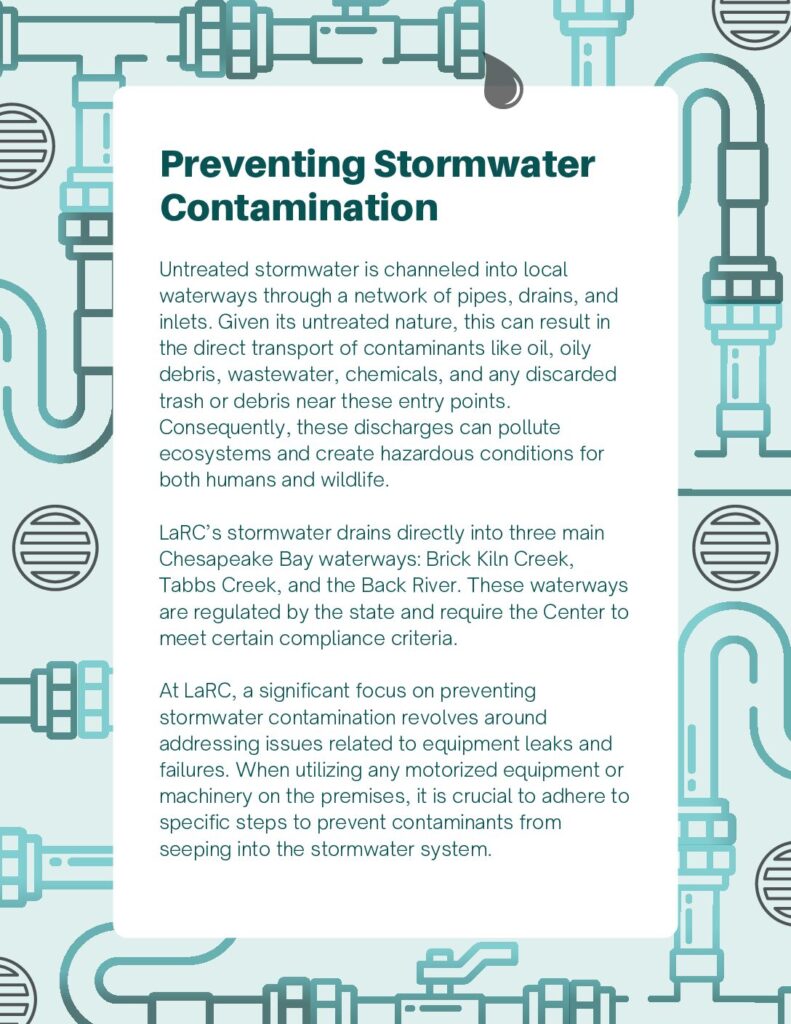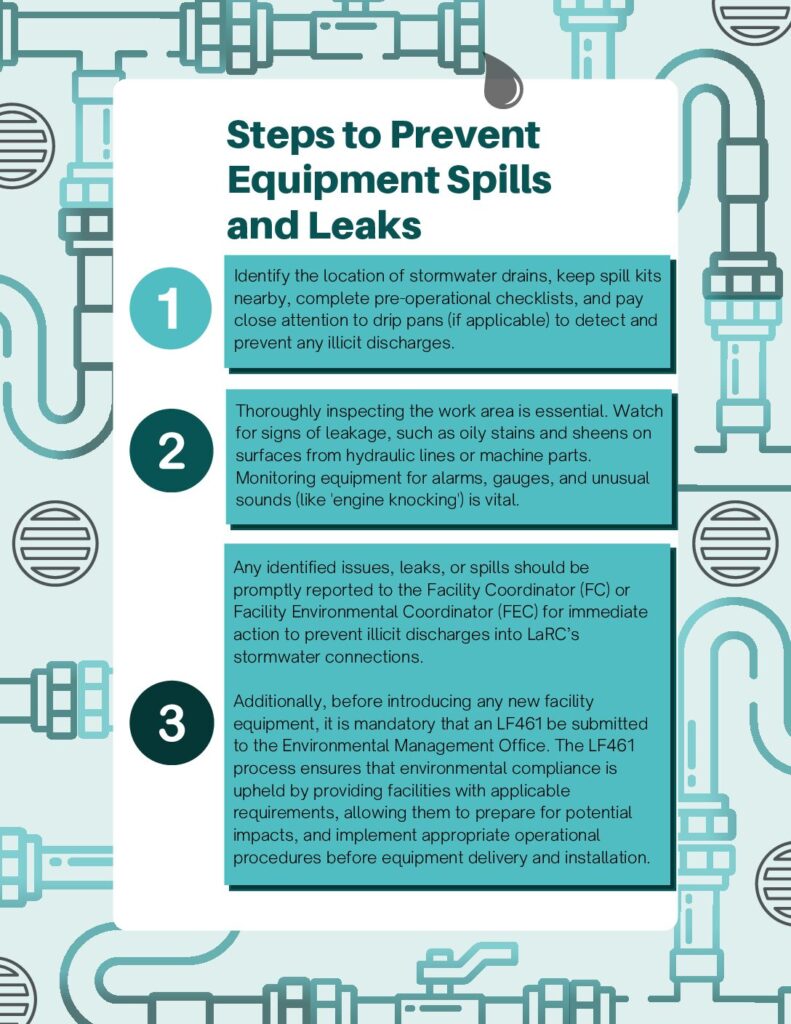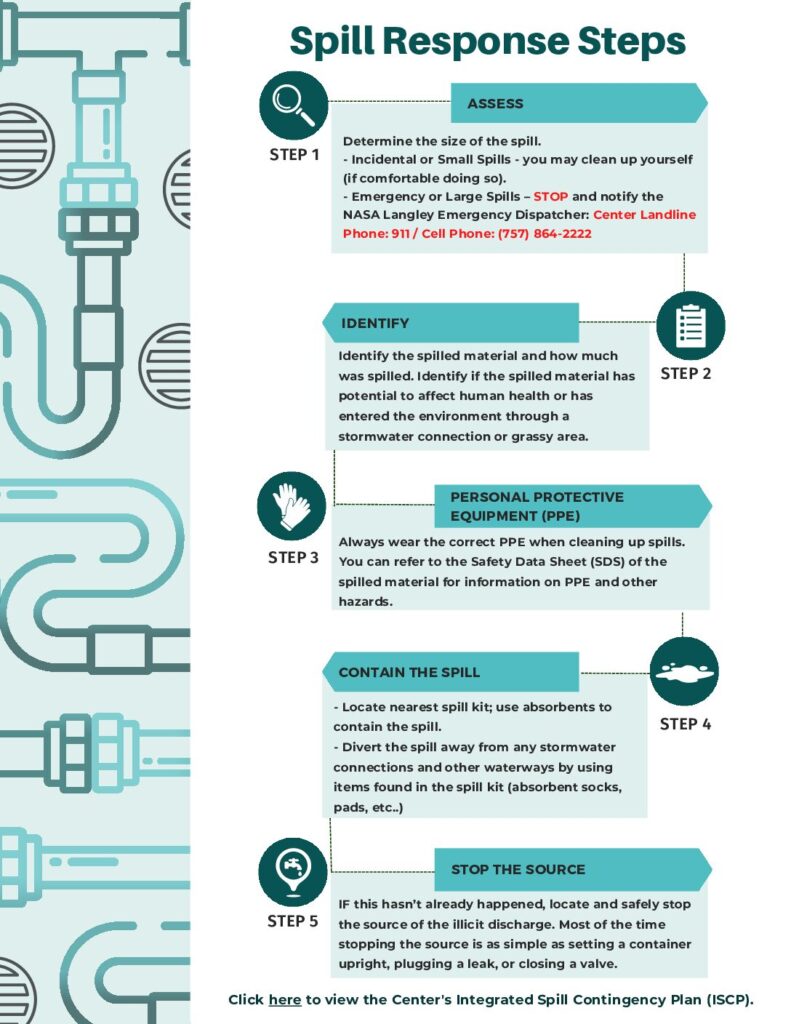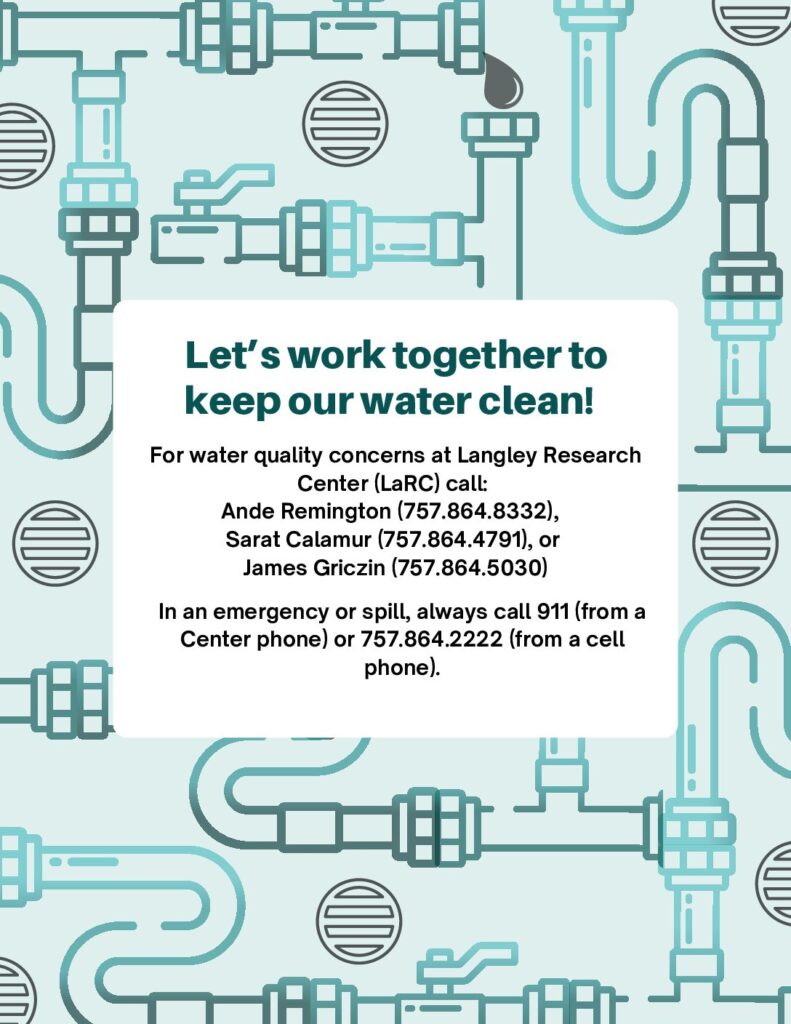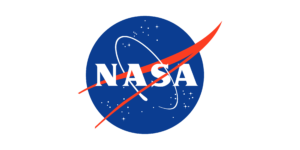Spotting the signs of water pollution can make a big difference, and it starts with knowing what to look for. As 2026 approaches, it’s a great time to refresh our awareness around water pollution. One key area to focus on is recognizing and reporting anything that might be an illicit discharge. To help with this, the Environmental Management Office (EMO) has developed a Water Pollution Prevention Field Guide. This resource is designed to help all personnel spot potential issues and know what steps to take if something doesn’t look right.
Please share the field guide with any coworkers who may benefit from it. Physical copies of the guide can be requested from EMO by emailing Kattie Iwanski.
Love the outreach above? Have ideas for the next one?
EMO is seeking feedback on our Municipal Separate Storm Sewer System (MS4) Program Plan and stormwater-related outreach efforts.
If you have any ideas on:
• Which outreach methods are most effective for you,
(Inside Langley announcements, mass emails, training sessions, posters, flyers, etc.)
• What types of messages you would like to receive, or
(local water quality issues, stormwater pollution basics, stormwater impacts, etc.)
• What our future outreach priorities should be
Please email Ande Remington or Kattie Iwanski with any feedback.
You can read the 2025-2026 MS4 Program Plan by visiting the NASA Langley Water MS4 public webpage, which offers more detailed information about the Center’s Water Quality Program.
Thank you in advance for your ideas and suggestions!

